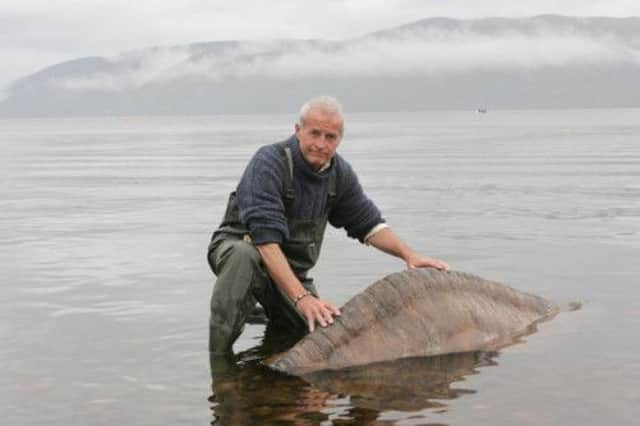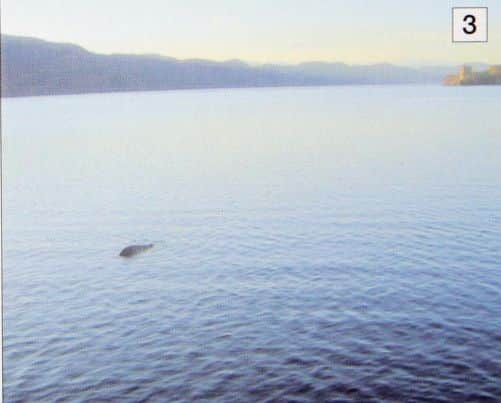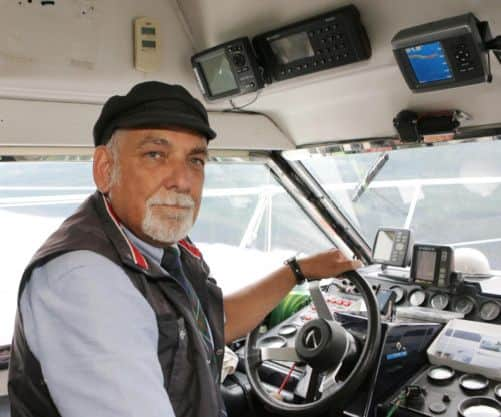Loch Ness Monster: George Edwards ‘faked’ photo


George Edwards, a cruise boat operator, said the picture, taken near Urquhart Castle and beamed around the world by fans of Scotland’s famous mythical creature, was a “bit of fun” and he was happy to join a “rogues gallery” of hoaxers.
Mr Edwards, 62, who has run Nessie hunts on the loch for 26 years, said the fake picture was a way of ramping up interest in the Loch Ness monster and attracting people to the area.
Advertisement
Hide AdAdvertisement
Hide AdWhen he published the image, he claimed it had been verified by a team of US military monster experts, which he said yesterday was another part of his fabricated story.


Mr Edwards added he was proud to follow in the tradition of the famous “surgeon’s photograph” of 1933, supposedly showing the monster’s neck and head above the waterline.
“There is no doubt at all the pictures are fake,” he told The Scotsman. “Anyone who comes on my boat, I will tell them what I did and why I did it. The reason I did it was to put Loch Ness truly and firmly back on the map again.”
However, Mr Edwards said he clings to the belief that a real Nessie does exist, even though the beast has never been captured on film.
“I still believe there are large creatures in the loch that we don’t know about. There is no doubt in my mind that there are some strange creatures, so I still believe in the monster,” he said.


“But some so-called experts claim it is a ‘big fish’ or a ‘big wave’. Is that going to attract tourists? No.
“I am saying there is a monster, but there is no real evidence. I tell it as it is with my customers. But people want to hear the fantasy, not rubbish about a big fish or a wave. The fantasy means it might still be real.”
He added: “I tell people on my boat the picture was a fake. I have been called a liar and a fake by some, and I am happy to join the rogues gallery.
Advertisement
Hide AdAdvertisement
Hide Ad“But how would Loch Ness be without these fake pictures? I freely admit I faked it for a bit of fun. It creates interest and
business.”
Last year, when he first showed the photo, he said: “I was just about to return to Temple Pier [in Drumnadrochit] and I went to the back of the boat which was facing the pier and that’s when I saw it.
“It was slowly moving up the loch towards Urquhart Castle and it was a dark grey colour. It was quite a fair way from the boat, probably about half a mile away, but it’s difficult to tell in water.”
Mr Edwards, who pilots his boat Nessie Hunter IV, had used a fibreglass hump, believed to have been previously in a
National Geographic documentary, to create the fake photo.
Yesterday, his confession sparked anger among Nessie lovers. Steve Feltham, probably the most famous Nessie hunter in Scotland, having spent 22 years living on the shores of Loch Ness looking for the monster, said it damaged the reputation of the beast.
Mr Feltham, who originally described the photo as the best evidence he had seen on the existence of Nessie, added: “It does the subject no good and damages his [Mr Edwards’] own
reputation. When you read things like this in the papers, people will think it’s all just a fairytale.”
White witch Kevin Carlyon, self-proclaimed “protector of Nessie”, said: “This has really angered me and I am uttering a witches’ curse at him. I will be sending a psychic torpedo to his boat that will come into effect at Halloween.”
Advertisement
Hide AdAdvertisement
Hide AdThe Loch Ness Monster has been a subject of debate since it came to the world’s attention in 1933, although St Columba is recorded to have sighted the beast in the sixth century.
The most famous picture of Nessie was the 1933 one taken by Robert Kenneth Wilson, a London gynaecologist.
However, it turned out to be an elaborate hoax by big-game hunter Marmaduke Wetherell in revenge on a national newspaper that had criticised him over his search for Nessie.